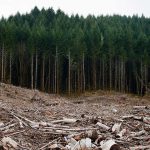
Introduction
Farmers are urged to make certain that fire-fighting equipment is easily accessible and in working condition, create firebreaks, participate in local fire protection association activities
A fire management plan for a property should identify:
- the fire hazards on different parts of a property
- the best position for fire breaks
- areas where controlled burns should be carried out
- a time table for carrying out controlled burns and for burning fire breaks
Contents
Burning your veld
In Africa, where lightning is common and people have used veld fires for thousands of years to improve the quality of their grazing, veld fires have a long history. Veld fires are also a controversial issue, however, and have been banned totally in some countries. The truth is that veld fires can be a useful veld management practice, but under the wrong conditions can also cause great damage to the veld. Veld fires are a good servant, but a bad master.
Veld is mainly burned for two reasons:
- to remove accumulated organic material, particularly in areas with a high rainfall;
- to combat or prevent bush encroachment.
When to burn
This is not only determined by the correct season of the year, but also by the amount of available combustible material. The right time of the year to burn is probably as close as possible to the first spring rains. By burning earlier in the year, the burned veld is exposed to cold and late winter winds, which can remove valuable nutrients in the form of ash. In addition, the stimulated grasses are weakened by having to rely on their reserves in order to survive without water for long periods. This is particularly the case if the veld is used as pasture. In both cases the presence of a dense stand of perennial grasses is important. By burning veld that is in a poor condition, the condition of the veld will deteriorate even further.
When burning to combat bush encroachment, it is important to have a good stand of dry grass beneath the shrub to generate a hot fire.
When not to burn
It is advisable not to burn the veld under the following conditions:
- Never burn to stimulate green pasture out of season. This practice has the same negative consequences as overgrazing and will lead to large scale veld deterioration over the long term.
- Never attempt to burn veld that is in a poor condition. This veld is already under stress and burning it will only let the veld deteriorate even further. It is preferable to only burn veld that has a majority of climax species and a biomass of ±3 000 kg of combustible material and more per hectare.
- Veld in areas with a low rainfall (±400 mm per annum and less) should preferably not be burned. Should follow-up rains not fall straight away, the veld will take a long time to recover.
Types of fire
A fire that burns in the direction of the wind is generally preferred. When burning to remove declining veld, a “cool” fire is required. This can be obtained by burning on a cool day with no wind. The cooler the fire, the less damage is caused to dormant grass plants. When burning to control bush encroachment, a “hot fire” is required. This can be achieved by burning on a hot day with a low humidity. A hot fire on a windy day will cause the bush to be burned right up to the crown, but with minimal burning at ground level.
Source: Guide to Grasses of South Africa. Frits van Oudtshoorn. Contact him at info [at] alut.co.za (find further ALUT details under the "Role players" heading)
Legal notes on firebreaks
The following are merely helpful points taken from the Act and are in no way meant to be the final word on it. It is the landowner’s responsibility to prepare firebreaks and have the correct equipment and trained personnel to prevent the spread of fires. This is made very clear in Act 101 of 1998. The act is available on www.firestop.co.za.
Landowners must prepare and maintain firebreaks on their side of the boundary or fence as well as any adjoining land.
The Landowner must obtain permission and determine a mutually agreeable date/s with owners of adjoining properties, and inform the fire protection association for the area, if any.
If no agreement can be reached on dates, the Landowner must give the owners of adjoining properties as well as the fire protection association in the area (if any) at least 14 days written notice of the intended day/s when the Landowner intends burning firebreaks.
An owner of adjoining land who has agreed on a day or who receives a notice must-
- burn his or her firebreak on the boundary concerned on the same day or days;
- be present at such burning or have his or her agent attend; and
- ensure that a sufficient number of persons are present on his or her side of the boundary to prevent any spread of fire when the firebreak is burned.
An owner may not burn a firebreak, despite having complied with subsection (2) of the Act, if the fire protection association objects to the proposed burning; or a warning has been published because the fire danger is high in the region; or the conditions are not conducive to the burning of firebreaks.
The owner must inform the owners of adjoining land and the fire protection association-
- if burning cannot be done on the agreed day or days or any of the days;
- of the additional days on which he or she intends to bum because of the failure to do so on the day or days.
It is not necessary for the owner to give 14 days notice of the additional days.
Owners of adjoining land may agree to position a common firebreak away from the boundary.
Should an owner intend to be absent for a period longer than 14 days during the period or part of any period in which burning normally takes place, he or she must give all owners of adjoining land an address and telephone number, if any, at which he or she may be contacted.
If an owner of adjoining land (i) is not present on the agreed or notified day or days; or (ii) has not given an address and telephone number, if any, as required in subsection (8), the owner may proceed with the burning in his or her absence.
Requirements for firebreaks
An owner is obliged to prepare and maintain a firebreak with due regard to the weather, climate, terrain and vegetation, and must ensure that it is wide enough and long enough to have a reasonable chance of preventing a veldfire from spreading to or from neighbouring land; it does not cause soil erosion; and it is reasonably free of inflammable material capable of carrying a veldfire across it.
Source: Agricultural Employers Organisation (LWO). Contact them at 0861 10 18 28 or visit www.lwo.co.za.
Find the free download of the easy-to-understand booklet You, wildfires and the law. See the “Websites & publications” heading for other material.
What are the legal duties regarding fire suppression?
- You may not allow a wildfire to spread across your land.
- You must report a wildfire that is burning on your land to your neighbours and the Fire Protection Association if there is one.
- If you are requested to help fight a wildfire you may not refuse to do so.
- You cannot interfere with or obstruct someone who is fighting a wildfire.
- If you are a land user, you should develop a fire management plan.
Fire Protection Associations (FPAs)
Find the guidelines on Fire Protection Associations (FPAs) on www.workingonfire.org and www.firestop.co.za. There is also useful information at http://landworksnpc.com
The formation of voluntary Fire Protection Associations (FPAs) is one way to prevent, combat and manage fires throughout the country. FPAs are envisaged to provide the overarching, co-ordinated support in provinces – aerial fire-fighting support, rapid attack teams, fire weather services, and co-ordination of fire records and training. Members are drawn from local communities and authorities, farmers, residents, landowners, nature conservation, municipal fire services and so on.
Through the FPA, farmers (and others) can pool their resources and jointly develop and implement veldfire management strategies for their areas. They can develop enforceable rules that protect all members and request advice and assistance from the State-employed chief fire-protection officer. This saves costs, protects you in terms of any compliance your insurer might require and enhances the protection of properties from veldfires.
Included in a FPA’s legal duties are the following. The FPA is to:
- develop and apply a wildfire management strategy for its area. This covers standards for fire breaks, exemptions from boundary breaks, and the maintenance of communal and strategic breaks.
- develop rules that will bind the members of the FPA.
- through its Fire Protection Officer, regularly communicate the forecast fire danger rating to its members.
- organise and train members in fighting, managing and preventing veldfires, and provide management services, training and support to communities.
- co-ordinate the allocation of resources and fire prevention and suppression activities of members.
- provide statistics about veldfires in its area to the Minister, and furnish the information needed to prepare or maintain the National Fire Danger Rating System.
- carry out the various powers and duties delegated to the FPA by the Minister.
It is important that your FPA has the following information about your property:
- Sources of water
- Where the firebreaks are
- The location of gates
Role players
Further reference:
Associations & NGOs
- Find examples of fire protection associations above: Free State Umbrella Fire Protection Association, KwaZulu-Natal Fire Protection Association (ZFPS), Lowveld & Escarpment Fire Protection Association, Cape Peninsula Fire Protection Association (CPFPA) and Greater Overberg Fire Protection Association.
Government
- The National Veld and Forest Fires Act 101 of 1998 provides a framework for owners to organise and collaborate in veldfire management. The Act is available on www.dalrrd.gov.za (as well as on www.firestop.co.za). The reader may also contact role players mentioned in this chapter. As required by Act 101 of 1998, the National Fire-danger rating system (NFDRS), a fire-danger rating model, was worked out. Find it here.
- Working on Fire Programme (WoF) www.workingonfire.orgWoF is a SA Government initiative under the Expanded Public Works Programme which employs people from disadvantaged communities and trains them in fire fighting. They are available to assist landowners in the preparation of firebelts and the fighting of fires. Contact details for their air operations, ground operations, training etc are available on their website.
- Cooperative Governance and Traditional Affairs (CoGTA) South African National Disaster Management Centre www.ndmc.gov.za and www.cogta.gov.za Emergency Relief Funding, Disaster Grants and Post Disaster Reconstruction & Rehabilitation Funding
- Department of Agriculture, Land Reform and Rural Development (DALRRD) Directorate: Agricultural Risk and Disaster Management Tel: 012 309 5723 pa.dadrm [at] dalrrd.gov.za
- Other government department role players include Forestry, Fisheries and the Environment; and Water & Sanitation. Find details on www.dffe.gov.za and www.dws.gov.za.
- Provincial conservation bodies like CapeNature are also involved.
Training and research
- Some of the Fire Protection Associations (see earlier note) provide training.
Websites and publications
- Visit the websites listed earlier on this page e.g. http://landworksnpc.com, www.workingonfire.org and www.firestop.co.za. Find information as well as references to publications.
- Read our blog “Devastating veld fires a serious concern for agriculture“.
- Download the Sustainability Initiative of South Africa (SIZA) “Guidance on South African Legislation” document, available on its website, www.siza.co.za. Fire Management is one of the chapters.
- The Best practice reference manual for wool sheep farming in South Africa, available in both English and Afrikaans, includes useful notes on fire management. Find the document on www.nwga.co.za or www.capewools.co.za.
- Santam. “How farmers can fight fire risk proactively by joining FPAs”. Available at www.santam.co.za/blog/intermediary-advice/how-farmers-can-fight-fire-risk-proactively-by-joining-fpas/
- Santam. “Fire safety and liability for farmers – how to be prepared for anything”. Available at www.santam.co.za/blog/intermediary-advice/fire-safety-and-liability-for-farmers-how-to-be-prepared-for-anything/
- Harrison, J. & Young, D. 2010. Farming for the future: farming sustainably with nature. Cape Town: Animal Demography Unit. The book includes the section “Manage fire appropriately”. Download the book at http://www.adu.org.za/docs/farming_for_the_future_lr.pdf
- Conservation bodies like Cape Nature have publications like Landowner Guides. Fire management is one of several topics covered. Find these at www.conservationatwork.co.za/conservation-guidelines.
- Fire risk information on your area is updated daily on www.weathersa.co.za.
- Find the ‘Publications’ option at www.fpasa.co.za, website of the Fire Protection Association of Southern Africa.
- The CSIR’s Meraka Institute runs the Advanced Fire Information System – satellite information on fires in Southern Africa. Visit www.csir.co.za/advanced-fire-information-system-field-terminal
- Resource materials on the National Veld and Forest Fire Act No 101 of 1998, a CD, includes a copy of the Act and answers to FAQs, include how to fill in forms to register an FPA (Fire Protection Association). The CD is available from Department of Forestry offices.
- The Veld and Forest Firefighting Fundamentals handbook, by William C. Teie and edited by Fred Favard, is available from Working on Fire and Kishugu.
- Gids tot die Volhoubare Produksie van Weiding by Prof Hennie Snyman includes notes on veld fires.
- The Fire Manager’s Handbook, published by the Southern African Institute of Forestry (SAIF). Visit www.saif.org.za for details (look for the “Forestry Handbook” menu option).
- Find the “Fighting Fire” Info Pak on www.dalrrd.gov.za. Other resources on this website include Preparing firebreaks and the Fire incidents reporting form.
- Find the free download of the easy-to-understand booklet You, wildfires and the law, and other material on http://landworksnpc.com.
- Fire & Rescue International www.frimedia.org
- Members of the Southern Africa Macadamia Growers’ Association can access the SIZA Guide to Law and Best Practice in Fire Safety on Farms at www.samac.org.za.
- Find “Bird-friendly burning and grazing best-practice for grasslands” at www.birdlife.org.za.
- http://gfmc.online, website of the Global Fire Monitoring Centre (GFMC). The GFMC is a project of the UN’s International Strategy for Disaster Reduction International Wildfire Preparedness Mechanism (UNISDR-IWPM).
- Maphumulo M. 2022, July 12. “Significance of fire insurance as winter wildfires likely to break out”. Go Legal. Available at www.golegal.co.za/fire-insurance-law



Share this article







